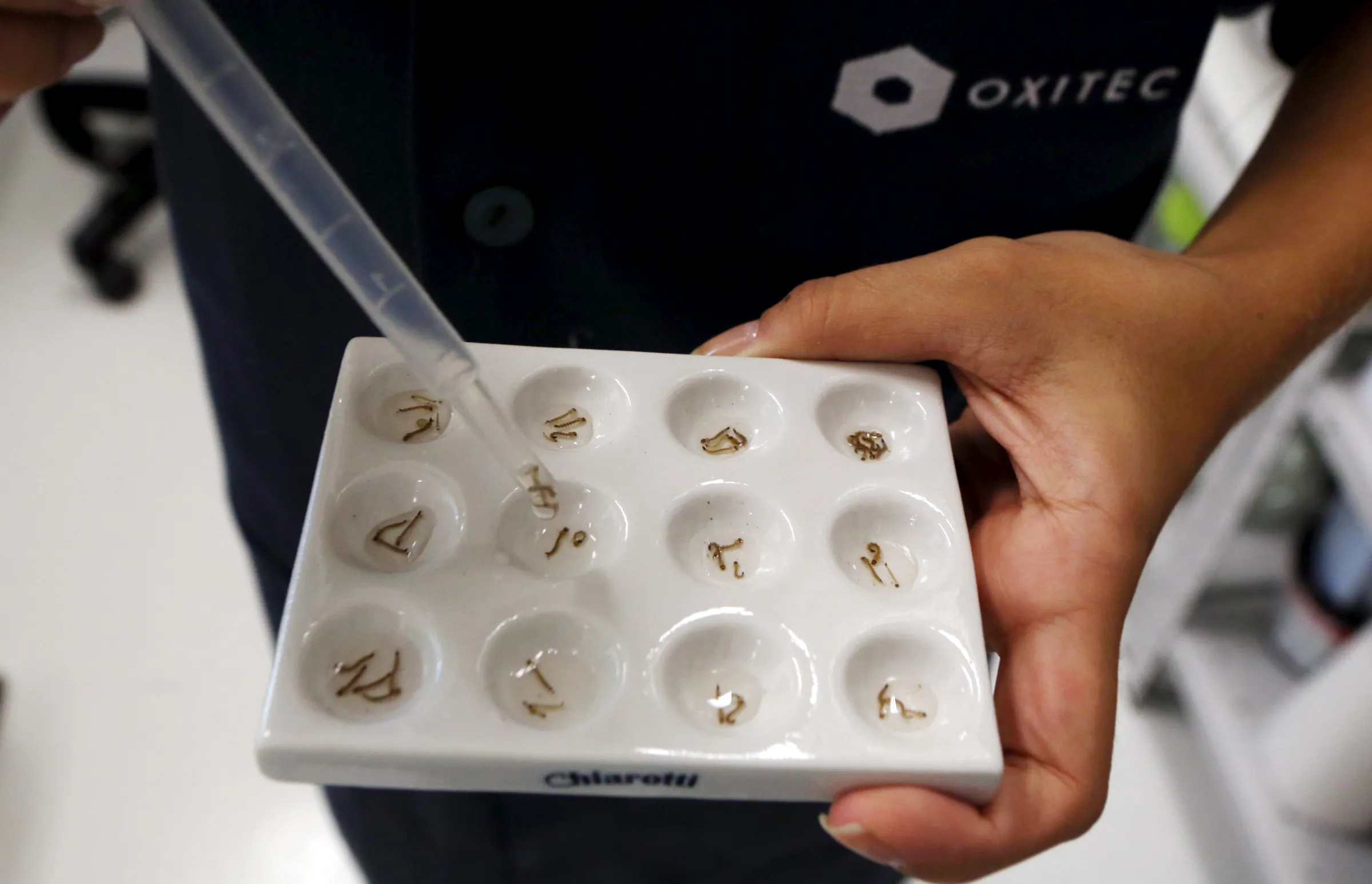Synthetic biology has already proven its worth to conservation by offering a sustainable, replicable alternative to the use of wildlife.
Synthetic biology gets IUCN nod as possible nature defender

A technician inspects larvae of Aedes aegypti mosquitoes in Campinas, Brazil, February 2, 2016. REUTERS/Paulo Whitaker
First global policy on synthetic biology paves way for states to decide whether to use this tool to preserve biodiversity, nature.
Elizabeth Bennett is Vice President, Species Conservation at the Wildlife Conservation Society.
In the race to slow down the sixth mass extinction, conservation efforts fall broadly into two categories: tackling the threats to biodiversity and helping species cope with them.
In both cases, the emerging field of synthetic biology shows significant promise, from the ability to engineer disease resistance in endangered species to providing synthetic alternatives to products derived from particular species, reducing pressure on them.
At its recent World Conservation Congress, the global authority on nature, the International Union for Conservation of Nature (IUCN), approved a policy on how best to manage these new technologies and their impacts, potentially either positive or negative, on biodiversity conservation.
Members voted in favour of a science-based approach to synthetic biology, rejecting a proposed moratorium that would have disrupted vital research into potentially transformative new tools not only for conservation but also for public health, including efforts to control vector-borne diseases such as malaria.
The outcome ensures that countries can continue to decide if and how to use synthetic biology on a case-by-case basis according to their needs and circumstances.
Enshrining the sovereign right of communities and countries to decide on the use of synthetic biology is important because the impact of biodiversity loss is felt unevenly around the world.
More than a million species are at risk of extinction, and while half the global economy relies on nature to some extent, low- and middle-income countries are harder hit by the loss of wildlife and ecosystem services.
Horseshoe crabs and coral
The rate of biodiversity loss has also outpaced available conservation tools.
Island ecosystems, in particular, face a growing threat from invasive mice and rats, which prey on and compete with native wildlife. Although existing tools to address this threat, such as rodenticides, have delivered many successes, they are expensive, challenging to implement at scale and can be risky for non-target species.
On the other hand, synthetic biology has already proven its worth to conservation by offering a sustainable, replicable alternative to the use of wildlife.
For example, horseshoe crabs have traditionally been harvested for their blood, which is used for testing medical products. More than a million crabs are caught and bled every year, and around 30% do not survive the process.
The urgency and scale of biodiversity loss leave no doubt that new conservation tools are needed.
Genetic engineering of DNA to replicate the active factor in the blood enabled scientists to develop a perfect substitute, which not only protects the crab and also its eggs, which are a key food source for the migrating red knot shorebird, but it also puts the medical industry onto a more sustainable footing.
Other potential applications of synthetic biology for conservation include the development of heat-tolerant coral reefs to protect against bleaching events, and genetic interventions to protect endangered frogs from chytridiomycosis, the worst infectious disease ever recorded in vertebrates.
Not a silver bullet
While synthetic biology offers much-needed hope for conservation, it is not a silver bullet.
Like any technology, its value is determined by its use. For example, developing synthetic rhino horn, with the aim of reducing pressure on rhino populations from poaching, would be disastrous for wild rhinos.
It would not satisfy demand for wild-sourced horns, potentially opening up a market that is currently illegal in all forms.
This is why the IUCN’s endorsement of a case-by-case decision-making process, informed by rigorous science and careful risk assessments, is so important. Each country deserves the right to interrogate which conservation tools, including synthetic biology, are appropriate for their context.
The urgency and scale of biodiversity loss leave no doubt that new conservation tools are needed.
Synthetic biology offers a growing number of sustainable and cost-effective applications to protect endangered species from the evolving threats they face. And it is already having an impact.
With the IUCN’s backing, countries – especially low- and middle-income countries – now need support to continue to develop capacity and infrastructure to assess and, where appropriate, make use of synthetic biology’s potential. The world as we know it depends on it.
Any views expressed in this opinion piece are those of the author and not of Context or the Thomson Reuters Foundation.
Related
Latest on Context
- 1
- 2
- 3
- 4
- 5
- 6














